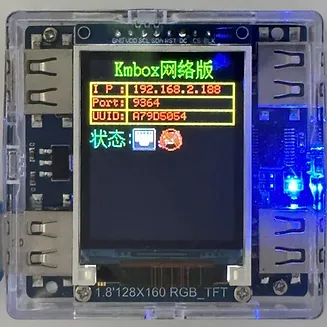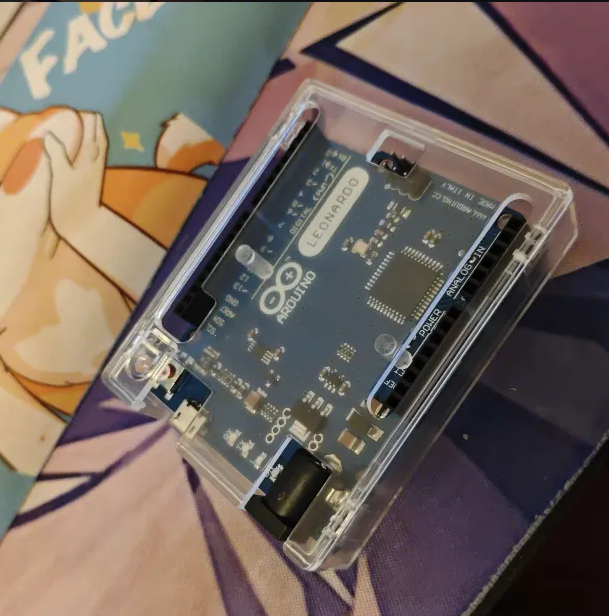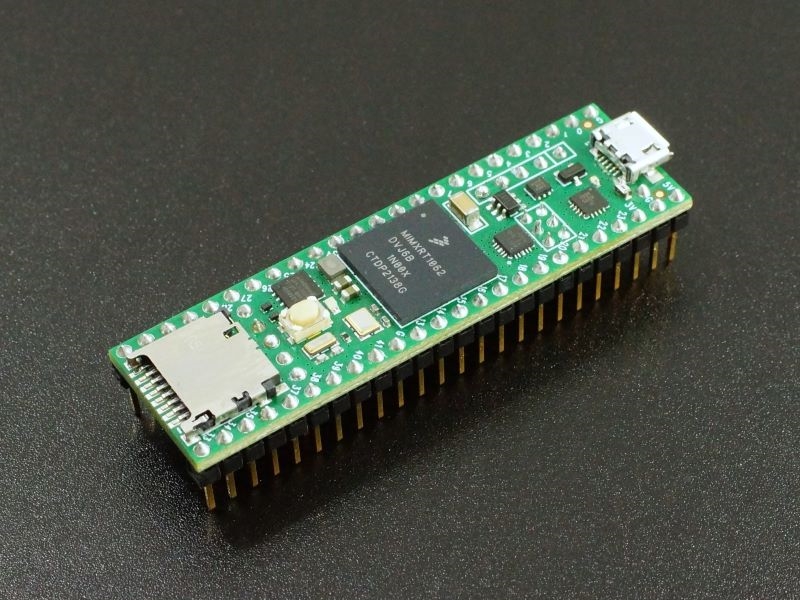DMA (Direct Memory Access) devices have emerged as sophisticated tools that allow for direct interaction with game memory. This article provides an in-depth analysis of four prominent hardware solutions used for implementing DMA aimbot functionality: KMBox, Arduino, MAKCU, and Teensy. We’ll examine their technical specifications, performance capabilities, security profiles, and overall value proposition to help understand the strengths and limitations of each platform.
Understanding DMA Aimbot Hardware in Gaming
DMA technology in the gaming context involves specialized hardware that can directly access a computer’s memory without CPU intervention. These devices typically operate in a configuration involving a primary gaming PC, a secondary PC running specialized software, and hardware that facilitates the communication between these systems to implement various game enhancements.
The Role of DMA Aimbot Hardware
KMBox, Arduino, MAKCU, and Teensy function as controllers that connect the gaming mouse, the primary gaming PC, and a secondary system running specialized software. Their primary purpose is to emulate mouse operations and facilitate the implementation of aiming assistance and trigger functionality in games. These devices work by creating a hardware bridge that can bypass software-based detection systems, allowing for the implementation of assistance features while minimizing detection risk.
DMA Aimbot Hardware: Anti-Cheat Compatibility
A critical aspect of these hardware solutions is their ability to operate undetected by various anti-cheat systems. All four solutions claim compatibility with major anti-cheat systems including FaceIT AC Client, Vanguard, Ricochet, BattleEye, and EasyAntiCheat. However, as we’ll see, they offer different levels of security and detection risk profiles.
KMBox: The Established Solution
The KMBox has been a staple in the DMA hardware ecosystem for several years, with models such as KMBox B Pro and KMBox Net being widely adopted.

Key Features and Capabilities
KMBox connects a mouse, the gaming PC, and a secondary PC running specialized software. It functions as a mouse emulator that allows for the implementation of aiming and trigger functionality. The device:
- Connects via high-speed USB
- Emulates mouse operation with minimal delay
- Works only in conjunction with a DMA card
- Claims to be undetectable by anti-cheat systems
Pros of KMBox
- Established Ecosystem: As one of the earlier solutions in this space, KMBox has an established user base and community support.
- Straightforward Implementation: The plug-and-play nature of KMBox makes it relatively accessible for users without extensive technical knowledge.
- Reliable Performance: KMBox provides consistent performance for basic spoofing needs, especially with older setups.
- Wide Compatibility: Works with a variety of games and anti-cheat systems.
Cons of KMBox
- Aging Technology: KMBox is starting to show its age with limited features and potentially higher detection risk compared to newer alternatives.
- Closed Source: Unlike some alternatives, KMBox uses proprietary technology without open-source firmware.
- Requires DMA Card: KMBox doesn’t function without a DMA card, adding to the total cost of implementation.
- Delivery Timeframes: Physical shipping can take 10-30 days according to vendor information.
Arduino: The DIY Approach
Arduino represents a more hands-on, customizable approach to implementing DMA hardware functionality, appealing to users with technical expertise and those who prefer building their own solutions.

Setup and Implementation
Using Arduino (specifically the Arduino Leonardo) for DMA purposes involves:
- Setting up hardware: Arduino Leonardo, USB host shield, soldering equipment
- Implementing HID (Human Interface Device) mouse controller functionality
- Utilizing serial communication between the Arduino and Python scripts
- Creating custom scripts to control mouse movements
Pros of Arduino
- Customizability: Users can modify both hardware and software aspects to suit specific needs.
- Learning Opportunity: Building an Arduino-based solution provides insight into the underlying technology.
- Potentially Lower Cost: At around $40 for the basic hardware (without firmware or software), it can be more affordable for those willing to implement their own code.
- No Proprietary Limitations: Users aren’t locked into vendor-specific ecosystems.
Cons of Arduino
- Technical Barriers: Requires significant technical knowledge including programming, electronics, and soldering skills.
- Time Investment: Substantial time is needed to build, program, and troubleshoot a custom Arduino solution.
- Lack of Ready Support: Without a dedicated commercial entity, users must rely on community support.
- Consistency Issues: Hand-built solutions may vary in quality and reliability.
MAKCU: The Modern Open-Source Alternative
MAKCU represents a newer generation of DMA hardware, built with current technology and an open-source approach to firmware development.

Technical Specifications
MAKCU is built with dual ESP32-S3 chips and features:
- Open-source firmware with continuous updates
- Advanced emulation capabilities that accurately replicate real device descriptors
- Full USB passthrough functionality in the v3 update
- Professional assembly with no required wiring or hardware modifications
Pros of MAKCU
- Open-Source Development: The open-source nature of MAKCU’s firmware allows for community involvement and continuous improvement.
- Improved Performance: MAKCU offers better speed, efficiency, and security compared to older solutions like KMBox.
- True USB Passthrough: The v3 update introduces full passthrough functionality, enhancing both speed and safety.
- Future-Proof Design: As of 2025, MAKCU is considered more reliable and future-proof than alternatives like KMBox.
- No Hardware Locking: Users aren’t locked into specific hardware configurations.
Cons of MAKCU
- Limited Mouse Compatibility: The passthrough functionality may not support all mice, though 1kHz polling mice are supported.
- Newer Platform: Being a more recent solution, it may not have the extensive user base or documented use cases of more established alternatives.
- Hardware Acquisition: As with other physical devices, shipping and availability may be limiting factors.
Teensy: The Firmware-Focused Solution
The Teensy approach focuses on specialized firmware for the Teensy 4.1 microcontroller, positioning itself as a secure alternative to KMBox with advanced features.

Features and Requirements
Teensy firmware for DMA implementation offers:
- “Perfect Mouse Descriptor Spoofing” claimed to be undetected on all anti-cheat systems
- Support for over 2000Hz polling rate
- Automated flashing and firmware generation
- Premade firmware options for users who don’t want to configure their own
- Compatibility with third-party software that works with KMBox Net
To implement the Teensy solution, users need:
- Teensy 4.1 with USB Host Pins and Pin 0 & 1 soldered
- 5 Pin to USB Host Cable
- CP2102 USB to Serial Converter
- Micro USB to USB A Cable
Pros of Teensy
- High Performance: Support for over 2000Hz polling rate potentially offers superior responsiveness.
- Flexibility: Options for both custom configuration and premade firmware solutions.
- Strong Support: Offers “excellent guides and human support” according to the vendor.
- Security Focus: Emphasizes undetectability with anti-cheat systems.
- Compatibility: Works with third-party software designed for KMBox Net, offering an upgrade path for existing users.
Cons of Teensy
- Hardware Requirements: Specific hardware components and configuration are needed, including soldering specific pins.
- Technical Knowledge: While easier than a pure Arduino approach, still requires some technical expertise.
- Limited Track Record: As a newer solution, it doesn’t have the long-term history of some alternatives.
- Cost Considerations: While the firmware is $50 for lifetime access, users must also acquire the necessary hardware components.
DMA Aimbot Hardware – Comparative Analysis
Performance Comparison
- KMBox: Provides standard performance that has been sufficient for basic needs, but is considered aging technology compared to newer alternatives
- Arduino: Performance depends greatly on implementation quality and user expertise
- MAKCU: Offers improved speed and efficiency compared to KMBox, with the v3 update introducing enhanced functionality
- Teensy: Claims high performance with support for over 2000Hz polling rate, potentially offering the most responsive operation
Security Profile
- KMBox: Claims to be “100% safe and cannot be detected” but is considered to have higher detection risk than newer alternatives
- Arduino: Security depends on implementation, but the DIY nature potentially offers unique profiles less likely to be specifically targeted by detection systems
- MAKCU: Designed with stronger anti-cheat safety in mind, offering “improved security” compared to KMBox
- Teensy: Heavily emphasizes security with “Perfect Mouse Descriptor Spoofing” claimed to be “completely undetected on all anti cheats”
Ease of Implementation
- KMBox: Most straightforward for users without technical expertise; plug-and-play design
- Arduino: Most challenging; requires significant technical knowledge including programming and electronics skills
- MAKCU: Relatively accessible with “no wiring required” and professional assembly
- Teensy: Moderate difficulty; requires some hardware setup but offers automated flashing and premade firmware options
DMA Aimbot Hardware Future-Proofing
- KMBox: Considered aging technology that’s “starting to show its age”
- Arduino: The DIY nature allows for continued adaptation but may require ongoing modifications
- MAKCU: Positioned as “more reliable and future-proof choice” as of 2025, with continuous firmware updates
- Teensy: Strong current feature set with “lifetime” firmware access suggesting ongoing support
DMA Aimbot Hardware Conclusion
The choice between KMBox, Arduino, MAKCU, and Teensy for DMA aimbot implementation depends significantly on user priorities, technical expertise, and specific requirements.
For users seeking the most accessible plug-and-play solution with minimal technical knowledge required, KMBox remains a viable option despite being older technology. However, its aging design and potentially higher detection risk make it less ideal for security-conscious users.
Arduino represents the most customizable but also most technically demanding approach. It appeals to users who value understanding the underlying technology and want complete control over their implementation, though at the cost of significant time investment and technical expertise.
MAKCU stands out as the most future-oriented solution with its open-source firmware, modern design with dual ESP32-S3 chips, and enhanced security features. For users looking for a balance of performance, security, and ongoing development support, MAKCU appears to be the most compelling option as of 2025. Click here to buy Makcu
Teensy offers an interesting middle ground with high-performance specifications and strong security claims, while requiring moderate technical involvement. Its support for extremely high polling rates may appeal to users prioritizing minimal input delay.
As anti-cheat systems continue to evolve, the landscape of DMA hardware will likely continue to change as well. Open-source solutions like MAKCU may have an advantage in adapting to these changes, while proprietary systems will depend on vendor responsiveness to emerging challenges.
Want To Get Started With DMA Cheats?
Click Here to Join our exclusive Discord community to get started cheating in your favorite video games!
- COMMUNITY: Connect with fellow DMA gamers and find teammates
- UPDATES: Be the first to know about new updates and features
- SUPPORT: Get personal help and tips directly from me
